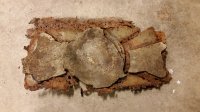“Only those who attempt the absurd can achieve the impossible”.
-Albert Einstein
I thought it would be helpful for me to begin this project with a clear mission statement. I may need to refer back to these goals as time elapses to stay on course. This is going to be a long journey.
The parameters of this project were formed based on the idea that I am not a wealthy man, and I don’t have a lump sum of funds available to invest in a well sorted, “original” dry car. This is a fact. The second fact: Given the e9’s well documented history and propensity for rust in hidden and concealed areas, I don’t know that any amount of money can buy a car that I would know with certainty is completely rust free and sound. So another important aspect of this project is the pride and sense of accomplishment that the process of this project will provide. My goal is to take this car apart and put it back together in a manner that at least meets, or dare I say exceeds the way BMW put it together - more structurally sound than when it rolled off the assembly line in Munich. More important, I will be aware of every single centimeter of the car. No hidden cavities will have been untouched. I will know and have documented the status of all of these bits. In the end, I may not spend any less, but I feel the results will be more personally rewarding.
Through this process, I hope to prove to myself that every aspect of this car again has integrity. And by posting the process on the forum, perhaps this will be discernable to others as well. After all, if you are reading this, you are inevitably a part of the process. Thank you!
Thank you!
-Albert Einstein
I thought it would be helpful for me to begin this project with a clear mission statement. I may need to refer back to these goals as time elapses to stay on course. This is going to be a long journey.
The parameters of this project were formed based on the idea that I am not a wealthy man, and I don’t have a lump sum of funds available to invest in a well sorted, “original” dry car. This is a fact. The second fact: Given the e9’s well documented history and propensity for rust in hidden and concealed areas, I don’t know that any amount of money can buy a car that I would know with certainty is completely rust free and sound. So another important aspect of this project is the pride and sense of accomplishment that the process of this project will provide. My goal is to take this car apart and put it back together in a manner that at least meets, or dare I say exceeds the way BMW put it together - more structurally sound than when it rolled off the assembly line in Munich. More important, I will be aware of every single centimeter of the car. No hidden cavities will have been untouched. I will know and have documented the status of all of these bits. In the end, I may not spend any less, but I feel the results will be more personally rewarding.
Through this process, I hope to prove to myself that every aspect of this car again has integrity. And by posting the process on the forum, perhaps this will be discernable to others as well. After all, if you are reading this, you are inevitably a part of the process.

